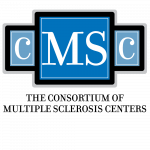Background: Infections in people with multiple sclerosis (PwMS) may have a detrimental effect on disease progression, risk of hospitalization, and healthcare resource utilization (HRU). The infection risk and HRU costs may vary between disease-modifying therapies (DMTs); however, the individual risks and differences associated with DMTs are not well-characterized. Some DMTs may increase the risk for infections in PwMS; however, previous studies have reported an intact humoral immune response in dimethyl fumarate (DMF)-treated patients.
Objectives: To compare infection-related HRU and healthcare costs (HCC) between PwMS treated with DMF or ocrelizumab (OCR).
Methods: Eligible patients were identified from the Optum US claims database between Apr 2017Sept 2020 (DMF n=1,429; OCR n=3,170). Patients were followed from index date to first occurrence of: i) end of study; ii) end of insurance eligibility; iii) discontinuation of index DMT; or iv) switch from index DMT to another DMT. Outcomes were annualized rate of infection encounters (defined as infection encounters [n] during follow-up window/ days followed [n] × 365); annualized infection-related HCC (defined as aggregated costs of infection encounters during follow-up window/ days followed [n] × 365); location-specific infections, and overall infection-related events. Propensity score matching (PSM) 1:1 method was used; PS was calculated via logistic regression for probability of DMF treatment conditional on demographics and comorbidities. Mean differences (MD) were reported for infection encounter measures.
Results: After PSM, DMF and OCR cohorts (n=1,094) were balanced based on baseline characteristics (standardized MD of adjusted baseline characteristics <0.1). Mean (SD) follow-up was 297 (243) days for DMF and 296 (243) for OCR. DMF patients experienced lower annualized rates of overall infection encounters vs OCR patients (MD -0.51 [95% CI: -0.92, -0.11], p=0.01). When stratified by type of infection encounter, DMF patients experienced significantly lower annualized rates of outpatient (MD [95%CI]: -0.44 [-0.80, -0.08], p=0.02) and inpatient/hospitalization infection encounters (-0.08 [-0.14, -0.2], p<0.01) vs OCR patients. A trend towards a shorter duration of infection-related hospitalization in the DMF vs the OCR group was observed (MD [95% CI]: -2.20 [-4.73, 0.26] days). The most common infection types in both DMT groups were urinary tract infections, sepsis, and pneumonia. DMF patients experienced lower annualized infection-related healthcare costs (MD [95% CI] -$3,642 [-$6,380, -$904], p<0.01) vs OCR patients, which was driven largely by hospitalization infection costs (-3,639 [-$6,019, -$1,259], p<0.01).
Conclusions: DMF-treated patients matched with OCR patients experienced lower annualized rates of infection encounters and lower infection-related healthcare costs.
Study Support: Biogen
[learn_press_profile]
